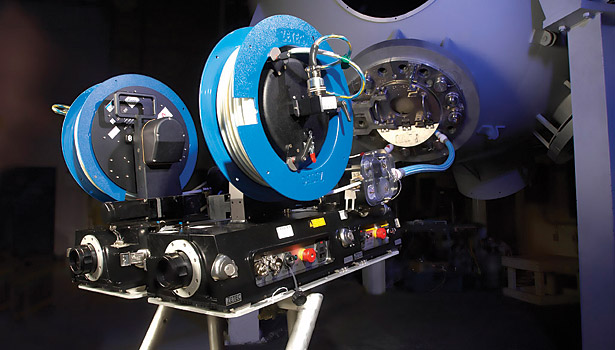NDT - Eddy Current
Advancing NDT Analysis
Automation has improved data acquisition, but it’s time to consider analysis.

EC Probes. Various types of probes used today, from basic to multi-coil array. Source: Zetec

Automated EC Tester & Probe delivery. This is currently used today for delivering two inspection probes into a steam generator vessel automatically testing two tubes at the same time. Inside the vessel is a robot that positions the probes in front of the tubes to be inspected. Source: Zetec


Introduced in the early 1980s, this system digitized the analog signals for display. The analysis process has evolved only in computer hardware and software technology advancements since then but the manual process has remained until about 2010-2011.




Looking for a reprint of this article?
From high-res PDFs to custom plaques, order your copy today!









